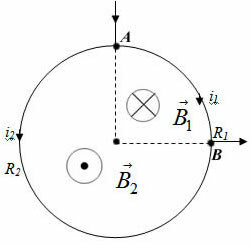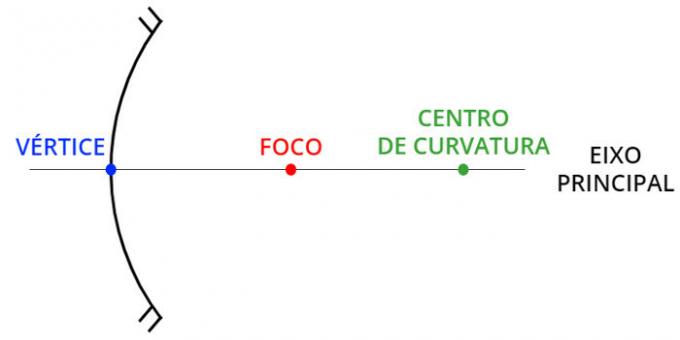THE Óoptics it's the branch of Fphysics which is dedicated to the understanding of phenomena that involve light. Refraction, reflection, dispersal, diffraction and image formation in mirrors and lenses are some of the main themes studied in this area.
To enable the understanding of several of these phenomena, the study of optics has laws and equations that mathematically define events related to light.
The following topics present some of the subjects studied in Optics that can raise doubts among students and those interested in understanding a particular physical phenomenon.
Vergence
At thin lenses are used in devices such as glasses and microscopes. These optical elements have the ability to deflect incident light rays and form different types of images. THE vergence is the magnitude that determines the power of a lens to deflect light and is mathematically defined as the inverse of the lens' focus.
V = 1
F
According to International System of Units (SI), the vergence must be measured in diopters (di), unit corresponding to the inverse of the meter (1 di = 1 m
– 1). Everyday, the unit used to define a lens' vergence is the degree.Click here to learn more about thin lenses.
real and virtual image
Reflecting and refracting surfaces can produce two distinct types of images:
Virtual image:this image cannot be projected and is always formed with the same object orientation. It is created from the divergence suffered by light rays when touching reflective or refracting surfaces.
Real image: it is the one that can be projected and is always formed with an orientation contrary to that of the object. It is created from the convergence suffered by light rays when touching reflective or refracting surfaces.
Optical fibers
At optical fibers are filaments of flexible material that have the ability to transmit light and carry information. The use of this material revolutionized telecommunications because it boosted the number, quality and speed of information transmitted via telephone and internet.
Light can walk on an optical fiber through the phenomenon called total reflection. Over a given angle of incidence, a ray of light, when passing from a medium with larger refractive index for another one with a smaller one, it can be totally reflected and will remain stuck in the medium that presents the highest refractive index.
Do not stop now... There's more after the advertising ;)

Many fibers are as thick as a strand of hair and consist of a core and a shell. The refractive index of the core must always be higher than that of the fiber's shell, thus, when incident, the light may suffer numerous total reflections and be transmitted by the fiber.
Click here to learn more about the importance of optical fibers.
angles of light
By studying the laws of reflection – that determine the formation of images in mirrors plans or spherical – and the laws of refraction (responsible for the formation of images in thin lenses), the correct understanding of the angles formed by light is essential.
Angles of incidence, reflection and refraction are always formed between the light rays and the normal line

Click here to access texts about reflection and refraction.
Objects color
THE color it is not a characteristic of objects, but depends on the light that illuminates them.
THE monochromatic light it has only one color. already the light polychromatic it is white light, formed by the union of all colors of monochromatic light. Colored objects have the ability to reflect only the light characteristic of their color, so under light polychromatic, blue objects, for example, reflect only the blue light component, which forms white light, and absorb the rest.
White objects have the ability to reflect all kinds of incident radiation. Black objects absorb any incident radiation.
The following image shows a plant in sunlight, which is polychromatic. Note that the leaves reflect green light and absorb other radiation. Similarly, red flowers absorb other radiation and reflect only red monochromatic light. If this plant were illuminated by a blue monochromatic light, it would be seen as black, as the blue light is totally absorbed by all parts of it.

Click here to learn more about object color.
By Joab Silas
Graduated in Physics
Would you like to reference this text in a school or academic work? Look:
JUNIOR, Joab Silas da Silva. "Main themes of the study of Optics"; Brazil School. Available in: https://brasilescola.uol.com.br/fisica/temas-principais-estudo-optica.htm. Accessed on June 28, 2021.



